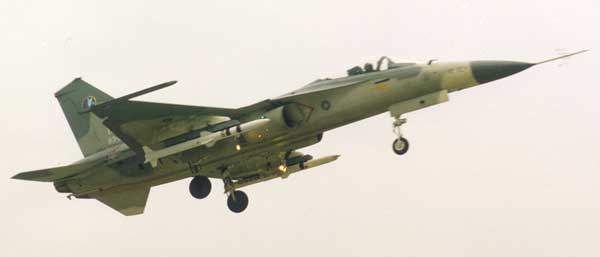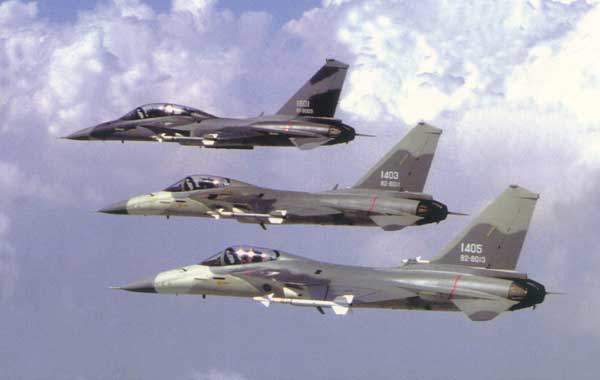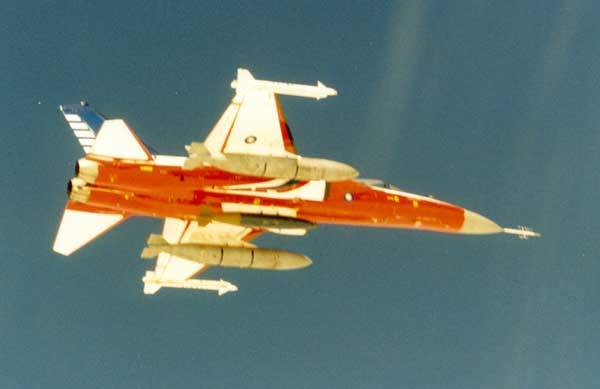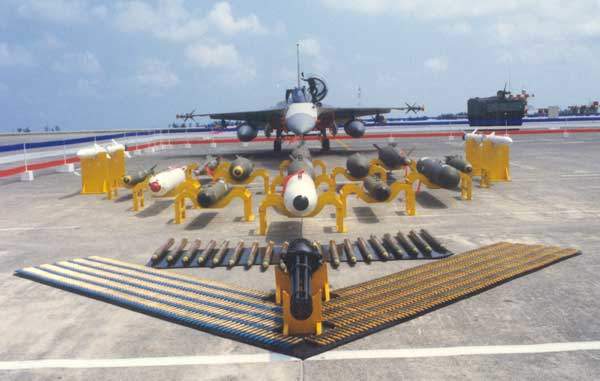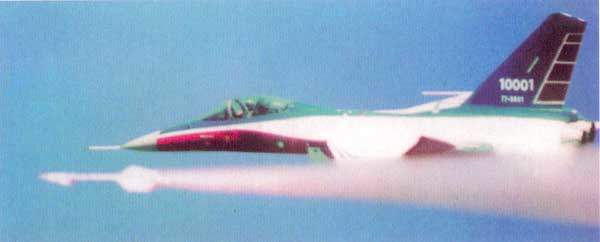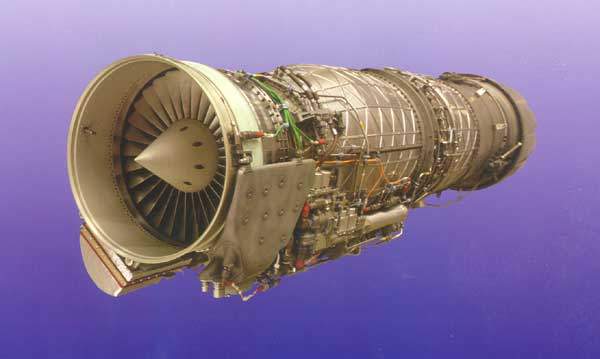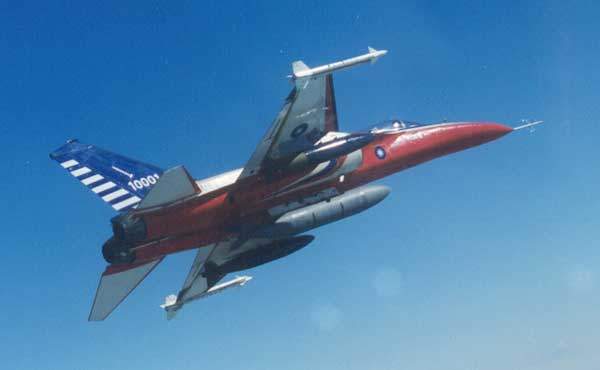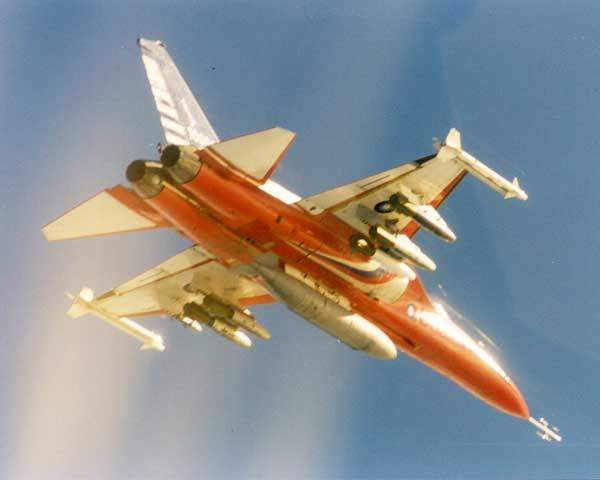The Taiwanese Ching-Kuo Fighter is developed and manufactured by the Aerospace Industrial Development Corporation based in Taichung. The aircraft is also referred to as the Indigenous Defence Fighter (IDF). The Ching-Kuo is an all-weather, multi-role fighter and is built in one-seater and two-seater configurations.
Ching-Kuo fighter programme
The programme to develop the aircraft, known as the An Hsiang or Safe Flight programme, started in 1982 with identification of the requirements for an air-superiority fighter. The rollout ceremony of the first prototype took place in December 1988, when the aircraft was named after the late President Chiang Ching-Kuo. The Ching-Kuo made its first flight in May 1989.
Ching-Kuo air superiority fighters are operational in the RoC Air Force of Taiwan (Republic of China) since January 2000 and the last of a total of 130 entered service in July 2000.
AIDC has developed an upgrade package which includes a digital cockpit, upgraded radar and countermeasures. BAE Systems supplied the new 32-bit digital flight control computer. Two F-CK-1 prototypes were upgraded to F-CK-1 C/D in 2006. The upgraded C/D aircraft made its first flight in October 2006. It was renamed as F-CK-1 C/D Hsiung Ying (Brave Hawk) in 2007. Other improvements in the upgrade package included increased internal fuel capacity, improved avionics, renovated electronic warfare capabilities and strengthened landing gear. Production of the C/D version began in 2009 as part of the $588m Mid Life Upgrade (MLU) programme.
AIDC will upgrade the initial 71 of 130 IDFs under the MLU programme. The first batch of six upgraded F-CK-1 C/D IDFs were delivered to the ROCAF in June 2011. The remaining 65 are expected to be delivered by the end of 2012.
Weapons
The aircraft has an integrated avionics and weapons control system.
A 20mm M61A Vulcan cannon is installed on the starboard side of the fuselage with a Photo-Sonics gun camera.
The aircraft has six hardpoints for carrying external stores, with two under the fuselage, one under each wing and one at each wingtip. The Tien Chien I (TC-1) or Skysword I short-range and the Tien Chien II (TC-2) or Skysword II medium-range air-to-air missiles are supplied by the China State Arsenals. TC-1 has a range of 5km and has an infrared seeker. TC-2, with a range of 60km, has active radar guidance and is armed with a high-explosive warhead weighing 22kg.
For ground attack, the aircraft can be armed with rocket pods, bombs, cluster bombs or air-to-surface missiles such as Maverick. The fighter can also be adapted to carry the TC-2A air-to-surface anti-radiation missile, which uses both active and passive radar guidance. TC-2A is being developed by the Chung Shan Institute of Science and Technology in Taipei.
Anti-ship missiles such as the Hsiung Feng II, similar to the Israeli Gabriel missile and supplied by the China State Arsenals, can be carried on the fuselage or underwing hardpoints.
Hsiung Feng II has a range of 80km, carries a dual-mode active radar and imaging infrared (III) seeker for terminal guidance and is armed with a 225kg semi armour-piercing, high-explosive warhead.
Three Hsiung Feng II missiles can be carried – one under the central fuselage and one under each wing.
Fuselage
The airframe design was developed under the YingYan or Soaring Eagle programme. The aircraft is of shoulder-wing monoplane (single-wing) design, incorporating composite structure materials. The aircraft is built to withstand 9g loading.
Cockpit
The pressurised and air-conditioned cockpit has a Martin Baker Mark 12 zero zero ejection seat and a single-piece bubble canopy. The cockpit is equipped with three multifunction displays and a head-up display.
Avionics
The Tien Lie or Sky Thunder programme covered the development of the avionics. The design of the avionics suite is configured in Line Replaceable Units (LRU) to allow for system growth and the easy upgrade of systems as new technologies become available.
The aircraft uses a BAE Systems (formerly Lear Astronics) fly-by-wire control system and a Northrop Grumman (formerly Litton) inertial navigation system.
Radar
The aircraft’s radar is the Golden Dragon CD-53. The multi-mode pulse Doppler radar has look-down, shoot-down capability and can operate in air and sea search mode. The radar has a range over 80 nautical miles.
Engine
The TFE1042 engine has been developed by the International Turbine Engine Corporation (ITEC), a joint venture between the Aerospace Industrial Development Corporation (AIDC) and AlliedSignal. The programme to develop the engine was named Yun Han or Cloud Man.
The engine, weighing 1,360lb, delivers 41.1kN maximum thrust. The modular-designed engine has full digital electronic controls.
The kidney-shaped air intakes are mounted low on the centre section of the fuselage, and the two engines are mounted side by side at the rear of the fuselage. The inspection schedule calls for a 2,000-hour hot section and 4,000-hour cold section inspection intervals. The fuel consumption is 0.81lb/h per pound of thrust.
The aircraft is equipped with a variable speed constant frequency electrical power generator, which is supplied by Westinghouse.
The Global Military Aircraft Market 2011-2021
This project forms part of our recent analysis and forecasts of the global Military Aircraft market available from our business information platform Strategic Defence Intelligence. For more information click here or contact us: EMEA: +44 20 7936 6783; Americas: +1 415 439 4914; Asia Pacific: +61 2 9947 9709 or via email.

